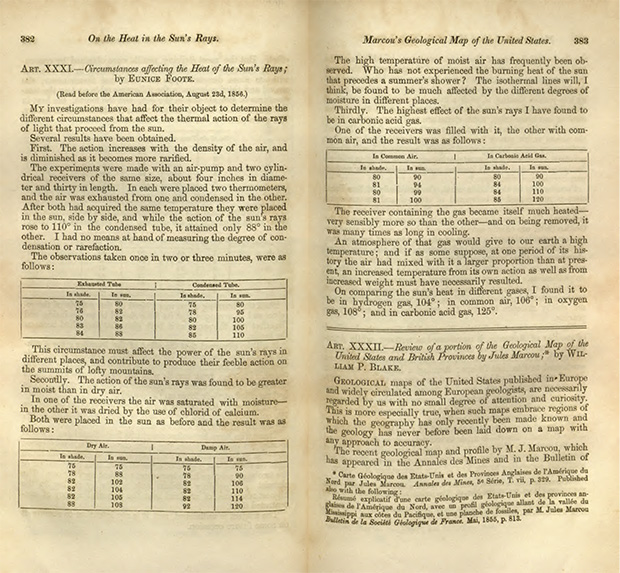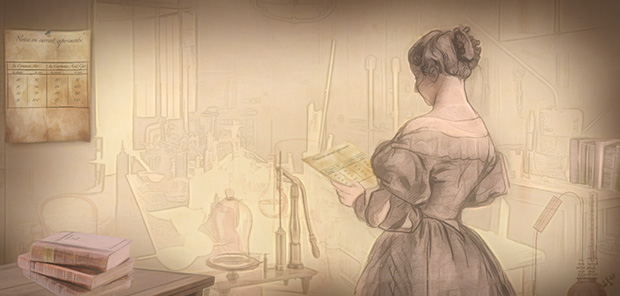Eunice Foote, Amateur Scientist From the Mid-1800s Whose Experiments Foreshadowed the Discovery of Earth's Greenhouse Effect
Drawing by Carlyn Iverson, NOAA Climate.gov. Born on July 17, 1819, Eunice Newton Foote was an amateur scientist and a women's rights campaigner who was friends with American suffragist Elizabeth Cady Stanton. Foote's experiments with atmospheric gases and her insights about past climate were overlooked for more than a century.
Women have been making significant contributions to science for centuries and receiving little to no credit for their work. Rosalind Franklin captured the X-ray images of the DNA molecule that allowed James Watson and Francis Crick to decipher its structure, but she received scant recognition for her role. [Correction, 09/17/19: The article previously stated that Franklin did not share in Watson and Crick's Nobel prize for the discovery. However, Franklin died before the scientists were nominated.)
African-American women at NASA — Katherine Johnson, Dorothy Vaughan, and Mary Jackson (along with the countless other women mathematicians) — helped engineer the spacecraft and solved the equations that guided the launch of astronaut John Glenn into orbit in 1962. But their contributions to America’s space program were barely recognized for half a century until their story became a best-selling book and blockbuster film in 2016.
That kind of recognition isn’t the case for many women scientists who were never given authorship on papers and whose work has been forgotten. One woman who almost fell into that category was American Eunice Newton Foote, an early female climate science pioneer whose name you’ve most likely never heard.

A scan of Foote’s paper "Circumstances affecting the heat of the Sun's rays " from the American Journal of Science (1857).
Foote’s experiments in the 1850s demonstrated the ability of atmospheric water vapor and carbon dioxide to affect solar heating, foreshadowing John Tyndall’s later experiments that described the workings of Earth’s greenhouse effect. Despite her remarkable insight into the influence that higher carbon dioxide levels in the past would have had on Earth’s temperature, Foote went unnoticed in the history of climate science until recently.
Pages: 1 · 2







